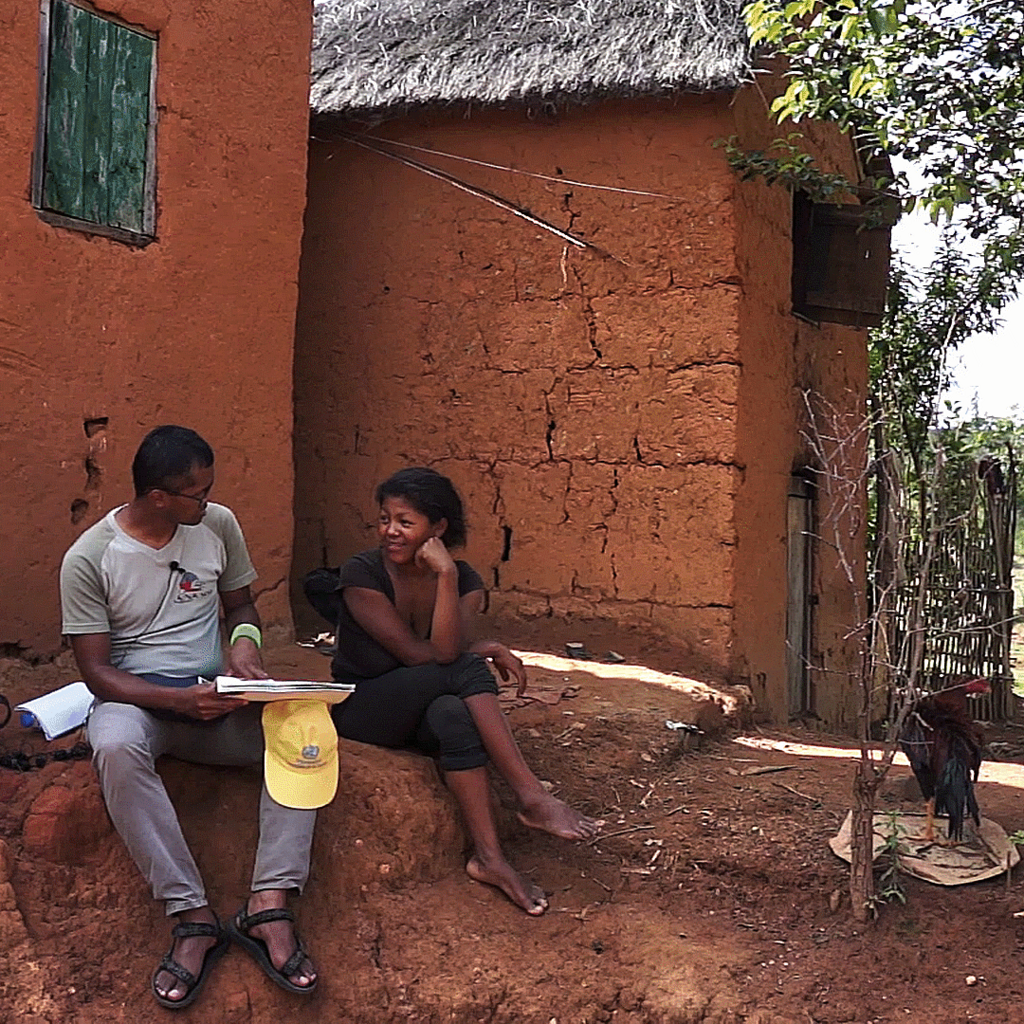Low Dietary Diversity in Malagasy Children
What do we see on the project photo?
An interview setting in a participant’s front yard, in the community of Behenjy, Madagascar. The translator is showing the food group collages to the participant, to survey the dietary diversity score of her child. A typical brick house of the highland region is also shown in the photo.
How would you explain to a child what the project is doing?
For children to grow properly they need a lot of colorful and diverse food. In Madagascar, every second child is too small, as their stomachs are mainly filled with rice. The project explored what children eat and the effect of the family’s habits on the food parents give them.
What is the project’s main objective?
Investigate the influencing cultural factors on dietary diversity in children living in the Vakinankaratra region, in order to better understand the context related to the nutrition of a family and especially that of younger children and to sensitize future research on the topic.
Why is the project important?
Stunting can lead to long term consequences and its causes are very multifactorial. A low dietary diversity is one key determinant of stunting in Madagascar, and this project was important to bring a broader context on the cultural habits and traditions and their influences on children’s dietary diversity.
What has been the most positive moment during the project?
It was a very positive experience to work so closely with the local people, and it was especially encouraging to see their willingness to participate. I was excited to hear that some participants knew that colorful food is important for the development of children. It was also very touching to hand out to them their “thank you” portrait photos during our final visit.
What have been the biggest challenges encountered in the project?
It was difficult to hear that participants knew which foods are important for the development of a child but that they can rarely give certain nutritious food. It was particularly impressive to hear that families reduce the dietary diversity when saving money for a special menu.
Which is the most important lesson learnt from the project?
Next to financial issues, cultural habits and access to markets may play a key role on dietary diversity. Dietary indicators are important to consider as part of the broader nutrition conversation, as children above the age of two seem to be more prone to often not receive food frequently enough, thus not achieving a minimum acceptable diet.
About the project
Title:
Just Too Small? The Heavy Toll of a Low Dietary Diversity in Children: Exploration of Cultural Influencing Factors in Madagascar’s Central Highland
Contacts:
Jacqueline Ribeli, former master's student at BFH-HAFL
Dr. Franziska Pfister, lecturer and supervisor at BFH-HAFL
Duration:
2019-2020
Funding institutions:
Bern University of Applied Sciences BFH - School of Agricultural, Forest and Food Sciences HAFL
Implementing institutions:
BFH-HAFL, AiNA soa
Further information:
SFIAR Award 2020
BFH-Persönlich (interview)

